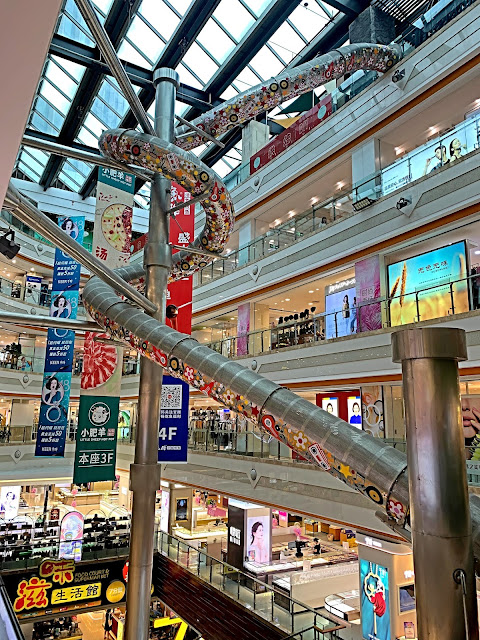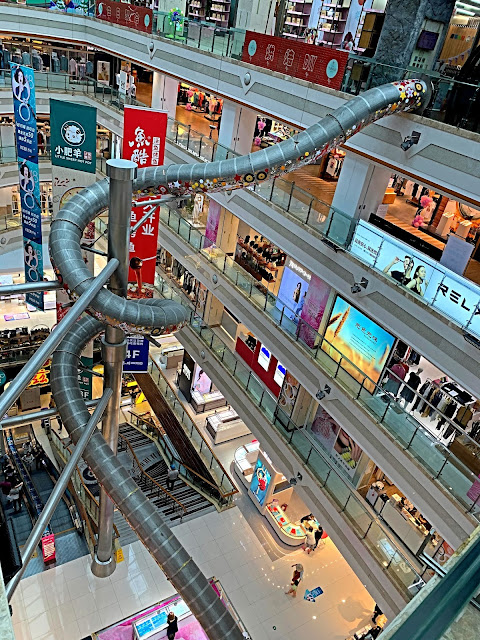China Ethnic Museum
中华民族园 Zhōnghuá mínzú yuán
An anthropological museum; an open air museum showcasing 56 ethnicities, culture and history in China. It is an interesting but HUGE park to walk around. There's exhibitions, ethnic houses and the scenery is beautiful. It is located near the Beijing Olympic Park so I could see the famous Beijing National Stadium @ Bird's Nest.
Entrance
The Seaweed Stone House of the Han
Han 汉族
The Salar People
Salar 撒拉族
Xunhua County is the home to China's largest group of Salar people, about 100,000 in population. This area is located in the Qinghai-Gansu border region, on both sides of the Yellow River. It is named as the Xunhua Salar Autonomous County.
Xunhua is known as the Land of Melon and Fruits.
The Salar people are a Turkic ethnic minority of China, who speak the Salar language, an Oghuz language. Predominantly Muslim.
Minaret and Mosque
Minaret is a symbol of a Mosque where the priest climbs to and assemble the Muslim people. This minaret is dated back to the late Ming Dynasty. It was built in Baizhuang Village, Qinghai. It was transported and rebuilt here in 2003.
The Dai People
Dai 傣族
The Dai (or Tai) People in China are the wealthiest ethnic group of Yunnan.
They live along the border of Burma and Laos in the Yunnan Province. The Dai grow rubber trees and specialty teas; expensive Pu'er variety.
A beautiful view of the majestic IBM building
The Gaoshan People
Gaoshan 高山族
The Gaoshan People of Taiwan live in mountain areas and valleys in the Taiwan Province. They originated from the ancient Yue people on the mainland; the first residents of Taiwan Island.
The Jingpo People
Jingpo 景颇族
The Jingpo people are an ethnic group of the Kachin people originated from the Tibetan Plateau. They reside on the border with Myanmar; primarily in the Dehong Dai and Jingpo Autonomous Prefecture in southwest of Yunnan province.
Munao Square is set up for Munao Singing Festival for the Jingpo community. The 4 wooden pillars represent the Yin (2 outer pillars) and Yang (2 inner pillars) pillars.
This is a Public House, designed for young Jingpo people to date!
The Achang People
Achang 阿昌族
The Achang People are natives to Western Yunnan around the southern tip of the stunning Gaoligong Mountains.
The Tu People
Tu 土族
The Tu People belongs to the Mongolian ethnic group, living in northwest of China, in Qinghai Province.
The Qiang People
Qiang 羌族
The Qiong Cage is used for defense and to store grain and firewood by the Qiang People; nomadic people in west China.
The Qiang People are of Tibetan ethnic minority; live in the mountainous regions in northern Sichuan.
The Menba People
Mongba 门巴族
The Monba or Menba People are from the Tibetan branch; live in Menyu in the lower part of the Yarlong Tsangpo River.
The Lhoba People
Lhoba 珞巴
Live in south-east Tibet. Lhoba means 'Southerners' in the Tibetan language.
Tibetan Museum
Tibetan 藏族
The Frizzen from Tibet
Ancestors of Tibet used frizzens (ancient lighter) to make fires. Most of the frizzens are in the shape of a sickle. Strike it on flint, sparkles come out and light the touchwood. Thus, a kindling is made. Men and women carried frizzens with them at all times; women carried smaller and more delicate ones, and hung on their waists.
The Jokhang Temple, a monastery in Tibet
Beautiful view of the Bird's Nest
Pilgrimage Road
The rugged stone pathway leads to Jokhang Temple. Buddhist scriptures and images are painted or carved on the rocks along this pathway; indicating the people's religious beliefs and worship for the primitive worship of giant rocks.
Korean Village
Korean 朝鲜族
Korean people live mostlyin Yanbian Korean Autonomous Perfecture, Jilin Province (near the North Korean border). Many Koreans in China are immigrants who arrived in the 17th century.
The Man People or The Machu People
Manchu滿族
The Manchus are the ethnic minority from the region of Manchuria, Northeastern China. They traditionally speak Manchurian.
Historically, the Manchus took over the Chinese Imperial throne and formed the Qing Dynasty from 1644 to 1911.
Tobacco pipes in the Qing Dynasty
The Manchu Emperor Temple
The Oroqen People
Oroqen 鄂伦春族
A primitive ethnic group living in northern China. They dwell in the forests of the Greater and Lesser Hinggan Mountains, together with wild deer and wild beasts.
The Daur People
Daur 达斡尔族
Living primarily in the isolated regions in Xinjiang, Inner Mongolia and Heilongjiang. This community are descendants of Daurs from the Qing Dynasty. They are famous for their animal head hats. They used to trade furs, skins and medicinal materials for gold and daily items.
The Jing People
Gin 京族
Small ethnic minorities living in 3 islands of Wanwei, Wutou and Shanxin. The ancestors of the Jing people originated from Vietnam.
The Bouyei or Buyi People
Bouyei 布依族
Most Bouyei can be found in forests of Guizhou, Yunnan and Sichuan provinces. Up until the Tang Dynasty, the Bouyei were known as the Zhong Barbarians or the Barbarians of the Southwest!
Elderberry
The Village Gate of Mountain Mao
The Miao People
Miao 苗族
The majority of the Miao people are living in the Guizhou province.
The Blang or Bulang People
Blang 布朗族
They live on the mountains in the Yunnan Province. Ancestors of the Blang are believed to be originated from the ancient Pu tribe. The Blang mountain is the native home of world-famous Pu'er tea.
The Va or Wa People
Wa 佤族
Living mainly in the surrounding areas of southwestern Yunnan province. Their language is unique; belonging to the Austroasiatic Phylum. It is believed that the Va people were descendants of the Baipu people who lived before the Qin Period (221 - 26 BC).
Ximen Boathouse
Exact replica of a traditional Va residence in the Ximen district.
The Li People
Li 黎族
Also known as the Hlai People. an ethnic group living of Hainan Island; the first people to populate Hainan. Hainan is China's 2nd largest island.
Pyramid Thatched House of the Li people
A bridge from the ethnic museum to the opposite side of the main road.




















































































































































































































































